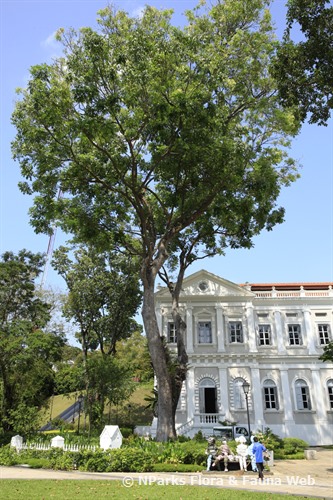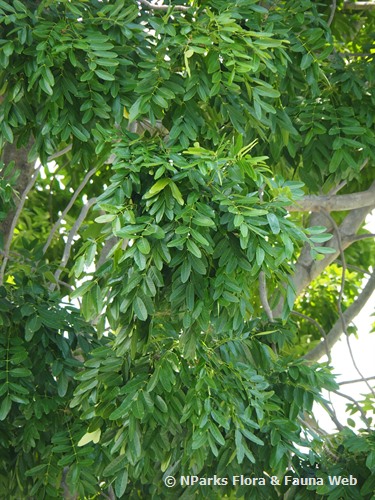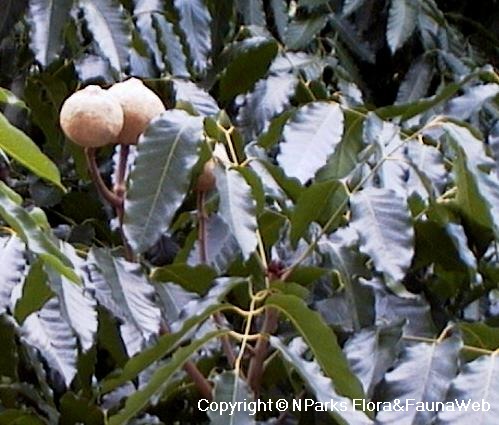
Back
Khaya nyasica
| Family Name: | Meliaceae |
| Common Name: | Red Mahogany, East African Mahogany, African Mahogany |
Name
Classifications and Characteristics
| Plant Division | Angiosperms (Flowering Seed Plants) |
|---|---|
| Plant Growth Form | Tree |
| Lifespan (in Singapore) | Perennial |
| Mode of Nutrition | Autotrophic |
Biogeography
| Native Distribution | Tropical Africa |
|---|
Description and Ethnobotany
| Growth Form | A big tree grows up to 60 m tall, occasionally with buttresses. |
|---|---|
| Foliage | The compound leaves are paripinnate, with 2-7 pairs of leaflets. The leaflets are oblong-elliptic, measuring 17 x 7 cm. |
| Flowers | The white flowers are borne in clusters, and each flower measures up to 10 mm in diameter. |
| Fruit | The fruit is a brown capsule, ovoid, about tennis-ball sized, measuring 3-5 cm in diameter. The ripe fruits will split open and release many brown winged seeds. |
| Ethnobotanical Uses | Timber & Products: The wood can be used to make furniture. Cultural / Religious: Heritage Tree: There are 4 individuals of Khaya nyasica listed as Heritage Trees in Singapore. To find out more about these trees, please visit the Heritage Tree Register. |
Landscaping Features
| Desirable Plant Features | Ornamental Form, Fragrant (Flowers) |
|---|---|
| Landscape Uses | General, Parks & Gardens, Shade Providing Tree / Palm |
Fauna, Pollination and Dispersal
| Pollination Method(s) | Biotic (Fauna) |
|---|---|
| Seed or Spore Dispersal | Abiotic |
Plant Care and Propagation
| Light Preference | Full Sun |
|---|---|
| Water Preference | Moderate Water |
| Plant Growth Rate | Moderate |
| Rootzone Tolerance | Well-Drained Soils, Fertile Loamy Soils |
| Propagation Method | Seed |
Foliar
| Mature Foliage Colour(s) | Green |
|---|---|
| Foliar Type | Compound |
Floral (Angiosperm)
| Flower Colour(s) | Cream / Off-White, White |
|---|---|
| Flower Grouping | Cluster / Inflorescence |
Fruit, Seed and Spore
| Mature Fruit Colour(s) | Brown |
|---|---|
| Mature Seed Colour(s) | Brown |
| Seed Quantity Per Fruit | Numerous (>20) |
Image Repository
Others
| Master ID | 32842 |
|---|---|
| Species ID | 7256 |
| Flora Disclaimer | The information in this website has been compiled from reliable sources, such as reference works on medicinal plants. It is not a substitute for medical advice or treatment and NParks does not purport to provide any medical advice. Readers should always consult his/her physician before using or consuming a plant for medicinal purposes. |


